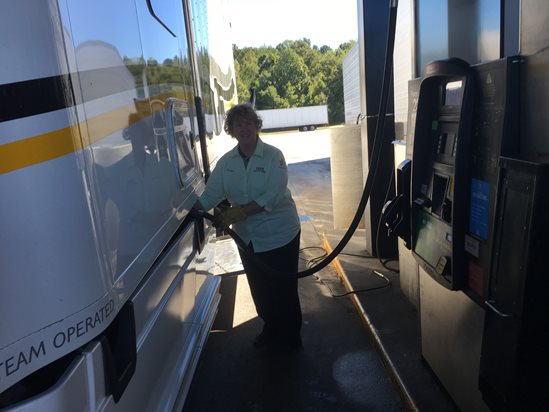
I recently had a great discussion with my TA/Petro fuel supplier about weather-related fuel additives and what, if anything, I need to do for my own operation. I was concerned about traveling into an area that would be dropping into the subzero temperature ranges. Here is what I have determined. My primary fuel supplier has a plan in place to help prevent any temperature related fuel issues with fuel purchased from them.
Treating will happen at biodiesel locations basically north of I40 from November through March. Biodiesel locations north of I20 and south of I40 will get treated when temps are predicted to be below 30˚. Other locations with ULSD will be treated when temps are predicted to be 10˚ or below. These treatments will bring the CFPP (Cold Filter Plug Point) to about -15˚ Fahrenheit.
If you were to fuel in Laredo, TX, untreated, and head for Michigan in the coldest part of Winter, should you have some concerns? With the fuel economy trucks are getting these days it is conceivable that you could get into Michigan without buying fuel along the way, so yes you may have concerns. If you purchased fuel on the way probably not something to worry about, however, I would get some fuel up there as soon as I could or treat the fuel you have left in the tank with an off the shelf treatment.
Would it cause a problem if I treated fuel that has already been treated? Likely not, most winter treatments are copolymer or terpolymer. When these are mixed together they can offer a bit better performance on the filterability side of things. Issues arise when adding too much additive to fuel such as 700-1000 active ppm (parts per million). Most shelf bottles offer 100 ppm or less at standard treatment rates so one would have to use a lot to cause a problem. When an additive gets cold in the toolbox, it thickens, then when you pour it in it may go to the bottom of the tank, doing no good.
Is it possible to lower the CFPP below -15˚F? It depends on the fuel sources, the amount of waxes in the fuel and the amount of additives used. CFPP is not an overall indicator of the operability of a fuel. Fuel typically starts to fail with cold weather-related issues before the CFPP temp is reached.
Knowing that the fuel gets treated, has there been any testing done to ensure the treatment product is compatible with all engine OEM’s? The treatment supplier does make sure there are no harms testing completed for use in engines. For example, the supplier has an approved TOP Tier additive package and had to have no harms testing submitted for this approval.
After having this conversation, I will be much more comfortable traveling north this winter. I will and always have carried cold weather treatment but I don’t think I will be as worried about having a fuel problem. I still say, do what you need to do to be safe and comfortable in your truck. Treat if you feel the need, remember you may cause a greater problem if you over treat.